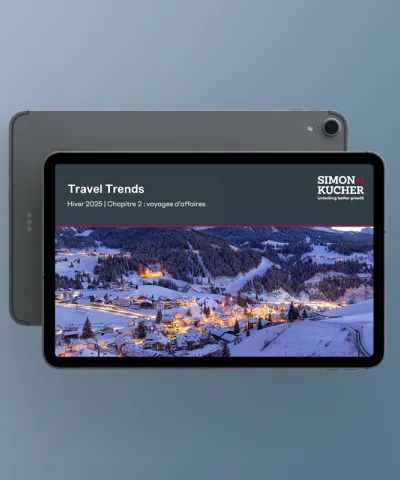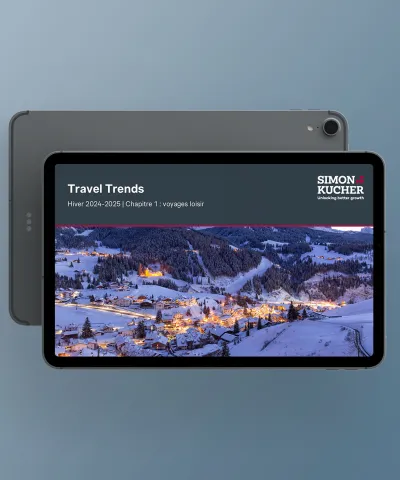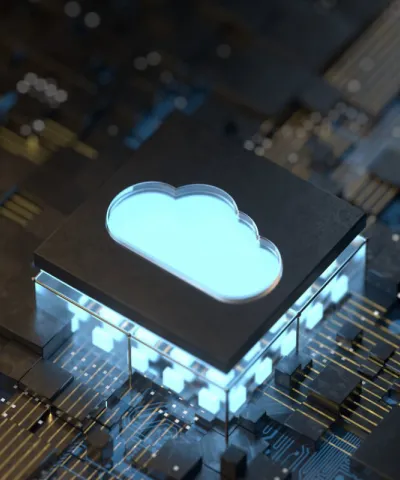In the past decade, the speed at which consumers expect delivery has accelerated dramatically. Pandemic lockdowns further transformed this convenience from a luxury into a necessity. Though the pandemic pushed consumers to adopt temporary behavior, the business case for ultrafast delivery isn’t expected to fade. How can consumer brands leverage ultrafast delivery for growth? 5 key questions to consider before jumping on the trend bandwagon – and how to respond to them.
Consumers have become increasingly accustomed to getting things faster. Major economic and technological breakthroughs have accelerated this trend, leading shoppers to expect unprecedented product availability and timeliness. While the shift to digital shopping was prevalent before the pandemic, lockdowns and macroeconomic shockwaves accelerated the speed and adoption of ecommerce platforms and online experiences. Chief among this change was a movement of everyday consumers from in-person to online, same-day grocery delivery, a new consumer behavior that is becoming more common by the day.
From a luxury to a necessity: Market opportunity for even faster, hyperlocal delivery
In Simon-Kucher’s recent article on the top ten trends for retailers in 2022, it was noted that the expansion of online shopping and mainstream adoption of grocery delivery is one of the biggest opportunities this year and beyond. Now with UberEats, DoorDash, and other services ramping up to grocery delivery, fueled by hefty ad campaigns and announcements of major wholesale partners, the time to act has never been clearer.
Though the pandemic pushed consumers to adopt temporary behavior, the business case for ultrafast delivery isn’t expected to fade. Grocery ecommerce is expected to comprise 20% of total sales by 2026, ballooning to over $260 billion in just four years. Retailers aren’t shy to jump on the bandwagon either: 99% of them are planning to offer same-day delivery by that time, making ultrafast delivery table stakes for any major manufacturer.
How consumer brands can leverage ultrafast delivery for growth: 5 key questions
Switching on a new channel is never easy, especially when that channel is only realistically around two years old. When posed with this option, brands may jump to scrutinizing the cost of entering the ultrafast channel and their internal capabilities. While these considerations are important, there are some key questions that may validate that the benefits of entry outweigh the costs. What you should ask yourself and how to proceed:
1. How can channel entry enhance our current strategy?
Consumer brands need to enter ultrafast delivery knowing why they want to use this new channel and how going to market enhances their current strategy. Whether it’s driving trial from new consumers, targeting existing shoppers, or homing in on new purchase occasions, validating channel entry as a clear point of opportunity is crucial.
Due to limited product assortments, heavy use of promotions by end consumers, and hesitant adoption from partners and brands, these consumer purchases are more likely promoting trial or “quick replenishment” rather than conversion from other channels. Understanding how these types of consumers and their needs complement or differ from your existing channel strategy will be key for successful entry.
How to act: Currently, the ultrafast channel looks to serve incremental sales rather than replacing existing wallet share as it most likely serves a “stopgap” trip mission rather than regular pantry loading. Therefore, it serves a different purpose than most traditional offline retail. Consider how your segmentation overlaps with activated segments, whether they may be cannibalizing current markets, and what potential performance you can expect in new areas.
Ultrafast channels should be entered with a deliberate goal in mind: as an opportunity to target potential brand switchers given a disruption in their daily routine, to move first ahead of your competition in owning a new channel space, or to grow brand presence with existing customers.
2. Why are consumers using ultrafast delivery?
Convenience is not cheap. While providers make revenue from delivery and service fees for each order, they are also marketing aggressive discounts to claim market share. Because of this, their consumers are likely coming from two different buckets: some seeking ultimate convenience, some seeking deals in discounts. These different segments may have entirely different purchase occasions, and manufacturers must consider consumers’ reasons to shop.
Internal findings from Simon-Kucher research suggest that there is a subsegment of consumers that are driven by speed, convenience, and flexibility. These groups see the ability to get their products delivered in a timely fashion and the ability to shop wherever and whenever as their greatest motivators for engaging in delivery platforms.
How to act: Be sure you have a clear idea on the overall consumer journey for your brand, as well as how these journeys are differentiated by shopper needs. Where are the critical touchpoints from awareness to purchase, and how does delivery fit in? Manufacturers will have to validate consumer demand across purchase occasions, products, and ultimate prices and premiums, ensuring that their end strategy aligns disparate consumer needs when entering the channel.
3. Which channel partners and service providers do we engage with?
The ultrafast delivery sector is a tight-knit, complex space due to its limited size and early maturity. With only a handful of apps and providers, consumer brands have to carefully consider not only who to work with, but also how to work with them. These decisions go hand-in-hand, and so manufacturers must zoom out to consider their plan of attack from the channel level to the overall distribution perspective.
How to act: Focus on how ultrafast fits in with and complements your overarching omnichannel strategy. Articulate and understand the larger goal behind the decision to enter the new channel and validate that mission against the business models and customer segments of available partners. Plan your spend, product assortment, and prices to reflect those strategies.
4. What products do we sell or not sell in this channel?
Product assortments in this space are narrower than other channels. Ultrafast delivery operates using microcenters that specialize in small product assortments to streamline logistics. With limited physical space and a focus on aggressive growth due to investor pressure and cutthroat competition, providers need to find the products that will fly off shelves the fastest. Driven by their current operational model, that means the consumers most likely to utilize these services are trialing, non-routine or convenience shoppers.
How to act: To claim your spot, come to these providers with a perspective as to which products can support their growth and ensure you have the right assortment that matches who is actually shopping in this channel. Understand the key product categories that sell in ultrafast and match those needs with your product portfolio. Leverage key metrics and data to support these conclusions in conversations with customers.
5. How does channel entry affect our pricing, assortment, and promotional plans?
The state of discounts in delivery also brings up a secondary issue: conflict with current promotions. While the distributors are the ones creating these offerings, consumers only see the final list price and may be surprised when they see the same product in two places at wildly different prices.
Ultrafast providers are likely more price-sensitive than their retail counterparts. The cost of service in the space is extremely high, and margins are razor-thin or nonexistent. They can then think of two potential routes: either to stock high-turnover products to try and drive volume, or focus on high-margin products and brands to make up for the extremely high cost-to-serve and current limited audience reach.
How to act: Take a closer look in both your trade spend and trade terms to assess how much you can influence the promotions that providers create. Plan your promotions with the value of the channel in mind, ensuring that discounts installed down the value chain align with current and future plans to minimize cannibalization. Don’t shy away from differentiated pricing: the channel provides new pricing value through convenience, different product assortments, and separate purchase occasions.
Post-crisis delivery trends: Strategic planning is key
As our world continues to change post-crisis, consumer brands must prepare themselves for an accelerated pace of change. Delivery apps have quickly become a key touchpoint for firms to attract new shoppers and drive loyalty for existing ones. While there are potentially great benefits for tapping into these trends, they also come with risks. Manufacturers will need to be steadfast in validating the ultrafast channel as part of their marketing strategy. In order to reap the rewards of entry, brands will need a strategic plan of attack on the who, what, and how much of this new frontier.








